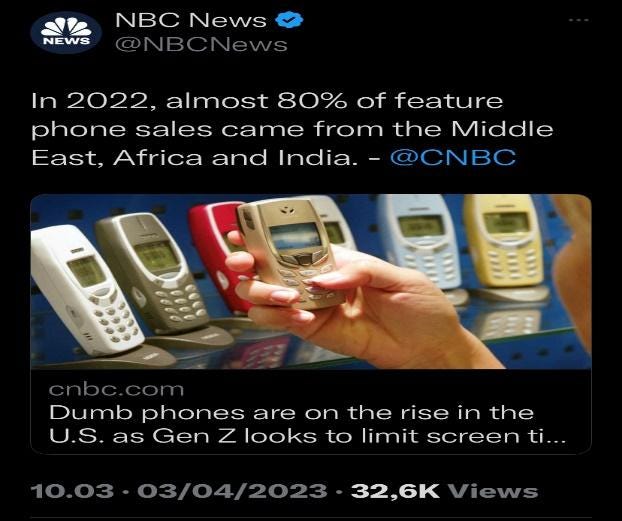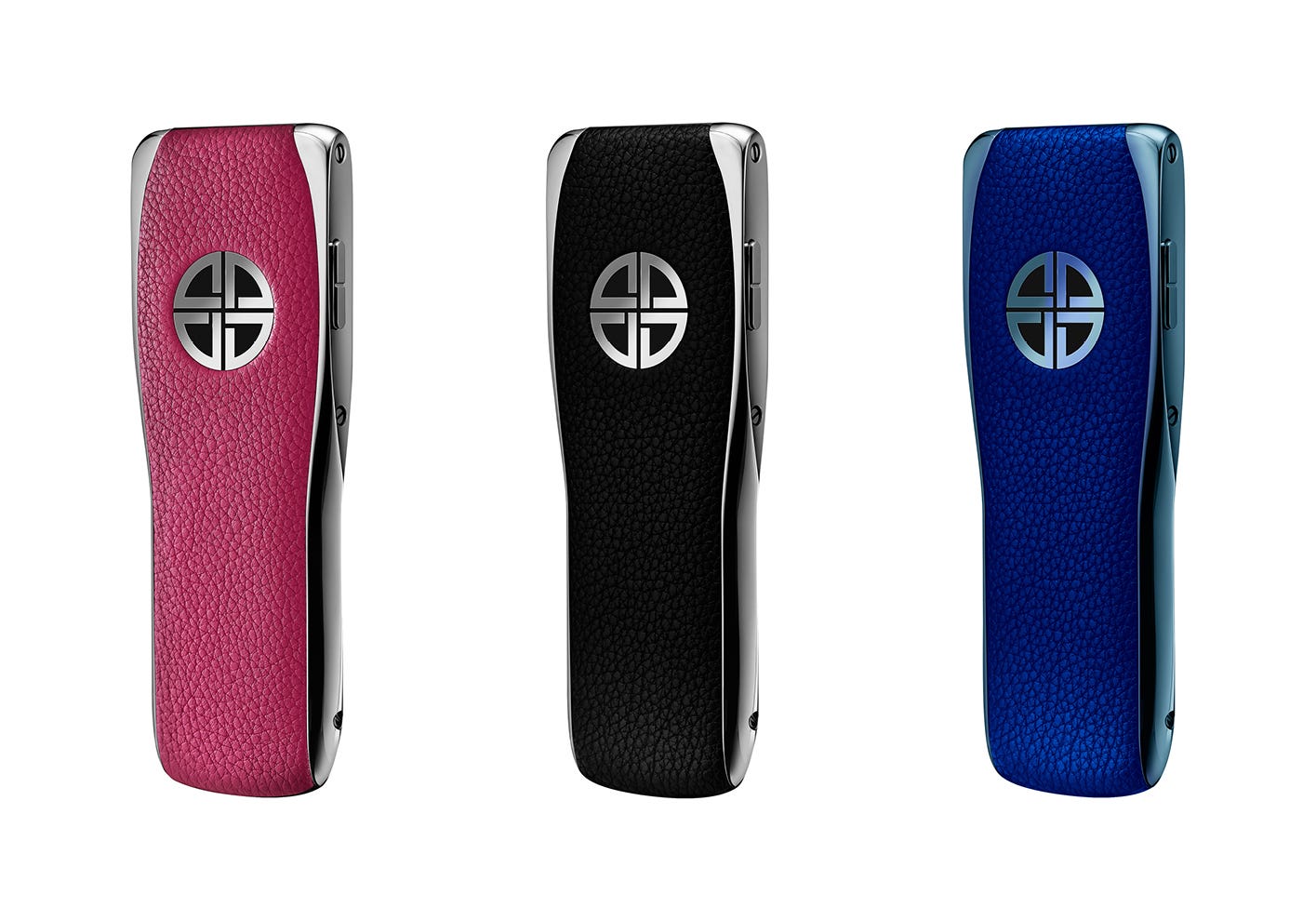The case for a Happyphone
Why we need to embrace a happyphone and take back control of our attention
“Accha, you love your phone more than me. Today was our time for the weekly game of football and you are on your phone for the last 2 hours”, wailed my son in tears, as he closed the door and left me fiddling with my iPhone XR on my home office desk.
I had promised my son that I will wrap up my office tasks in 15 minutes, however, I fell prey to a Trojan Twitter notification promising 10x productivity through the usage of AI tools. A rabbit hole of multi-threads ensured that I was productive in wasting my time and neither did I complete my office tasks nor could I play the promised football game with my son. I had a stark realization that my smartphone controls me. Since the smartphone has become a necessity for my work life, I have not been able to separate it from my personal space and proof of the pudding is the ever-increasing anti-library in my home. However, on my recent visit to my hometown, Kerala, I could notice that smartphone addiction has become all-pervasive in our society. If not in conversation, my mother and mother-in-law were constantly scrolling on YouTube, Facebook, and the latest WhatsApp Status. They recalled it makes them feel happy and connected to their friends. However, they only ended up being more even lonely after scrolling through the positive-laced pictures on social media. A few months back, my son’s friends joined us at home to watch the world cup FIFA final match between France and Argentina. It was one of the most nail-biting football matches, I have ever witnessed. Amid Blink-and-you-miss-it action, I was baffled that two of his friends still found time to watch YouTube Shorts on their iPhones.
We have turned into “homo-distractus” - a species with a short attention span known for compulsively checking our devices. We think we are The Consumer, however, we have become The Product of an “Attention Economy” industry, which barely existed a century ago. It started with the dependence of newspapers on advertisements and the advent of commercial hoardings in Paris to garner the attention of the person on the street. Attention slowly morphed into a valuable trading commodity like wheat, oil, and gold as the Attention Merchants realized that it was profitable to trade Attention with Money. The Attention Merchant has started engulfing us in our most private moments. I was alerted to this when recently, my wife caught
me in exasperation browsing the phone during one of our conversations. The root of human civilization’s progress has been our Attention. We pay attention to problems, we get curious about the problems as we stay longer on the problems and we make progress as we solve the problems. However, with the overabundance of information and content, attention as a resource is becoming a scarce currency. We are in an Attention Crisis. I believe we will soon see a movement for reclaiming our minds and human consciousness. The most vital human currency in need of conservation in the coming decades will be our Attention.
“We must reflect that, when we reach the end of our days, our life experiences will equal what we have paid attention to, whether by choice or default. We are at risk, without quite fully realizing it, of living lives that are less our own than we imagine.”
Tim Wu, The Attention Merchants, The Epic Struggle to Get Inside Heads
Do we have a way out to reclaim our minds? As consumers, we need to stop tech platforms from distracting us by design. The current tech platforms of smartphones and the ecosystem players are in a competitive race to manipulate our attention as we are the Products. We need tech platforms to embrace, rather than exploit our humanity. As we speak, there is a silver lining that provides hope for the future.
According to a report by software SEMrush, Google searches for feature phones have jumped 89 % between 2018 and 2021, and Gen Z in the US is increasingly buying flip feature phones to minimize screen time, reduce smartphone addiction and improve mental health.
The number of research studies pointing out the positive correlation between smartphone addiction and mental health is high. A team of researchers from Germany’s Heidelberg University used MRI to look at the brains of people with smartphone addiction. They discovered decreased grey matter in the regions of the brain – insula, which was previously also seen in the brains of drug addicts. We are still in the early years of mobile phone usage, and we have not seen even one generation experience the complete lifecycle to complete gauge the long-term implications. However, there is no denying the fact that there is growing acknowledgment that the decline of mental health is becoming a serious impediment to societal progress. If we do not strive for balance, we may be at risk of becoming an unhappy society.
However, the biggest impediment to a feature phone is the “coolness” quotient. Feature phones are called dumbphones. They are considered outdated, inconvenient, and down-market. On one side of the spectrum, we have phones from XOR, which are expensive, and on the other end, we have bare metal feature phones, which can be picked up at 20 dollars from a store. Within the gradient scale, we have the trendsetters like Mudita, Lightphone, and Punkt, who are pioneers in digital minimalism. Hence feature phones do not have a mass market and cater to a very niche audience.
To reclaim our human consciousness, we need to reinvent the feature phone and make it sexy, beautiful, and aspirational to spur mass adoption. Like Happysocks reinvented the socks industry with its approach toward mindfulness, we need Tech Majors to reinvent the featurephone into a happyphone that can be positioned as a cultural statement.
We as human beings love optionality. For example, many families have a second car. Closer home in Denmark, where I live, almost all Danes own a bike in addition to a car. We are attuned to having multiple transportation modes or even multiple homes. Hence I see no reason why we cannot own a happyphone in addition to a smartphone. The biking culture in Amsterdam and Copenhagen revealed that the conscious choice of the bike as an additional transportation element had profound implications for individual health, the urban landscape, and the environment. Similarly, I believe that the conscious choice of a happyphone in addition to a smartphone can have a similar cascading effect on human consciousness. Tech Platform Majors could start positioning a beautifully designed Happyphone as the Second Phone as part of their sustainable outreach to help us regain back control of our Attention. I am optimistic and look forward to a day when beautiful minimalistic phones evolve into mainstream accessories.






